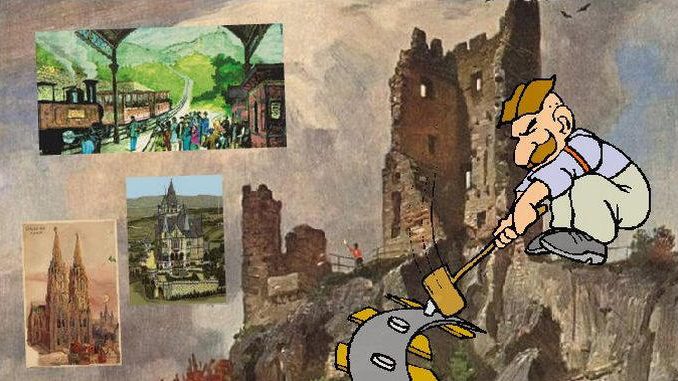
For almost 30 years, named Bismarck Era after him, the “Iron Chancellor” Otto von Bismarck he and his Emperor William I decided about Prussia’s and Germany’s fate. Among all the Prussian and then German politicians, he stands out. He raised Prussia to a position of hegemony among the German-speaking countries.
Bismarck and unification
Bismarck, a staunch conservative, demanded that the multi-ethnic state of Austria ceded primacy in Germany to the predominantly German Prussia. His goal was to unify Germany under Prussia’s primacy, by “iron and blood” if necessary.
So he did. After three wars in 1864, 1866 and 1870/71 Prussia was the largest and most powerful German state. Austria was excluded, and re-orientated towards its south-eastern territories, the Austro-Hungarian Monarchy came into being.
After the victory at Sedan 1870, even the reluctant German states gave in to the patriotic enthusiasm, and Bismarck could win them over for unification. On January 18, 1871, William I was proclaimed German Emperor in the Hall of Mirrors at Versailles.
The Empire was a federal state consisting of 25 federal states, 22 monarchies and the three free cities Hamburg, Lübeck and Bremen, plus “Reichsland” Alsace-Lorraine.
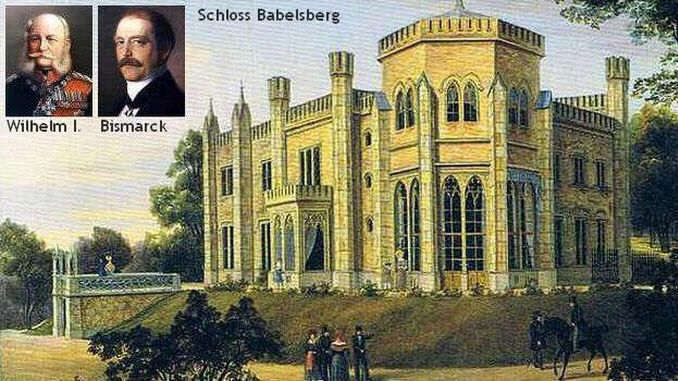
Prussian dominance
Now that then million Austrian Germans lived outside the Empire, Prussia’s dominance was overwhelming. She was by far the biggest state and had the largest army. Moreover, the crown was hereditary within the Hohenzollern dynasty, and the Prussian Prime Minister was in personal union Imperial Chancellor.
No democracy
The constitution of 1871 gave the Emperor (in German: Kaiser) and his Chancellor extensive powers. The Chancellor was responsible solely to the Emperor, not to the parliament, the Reichstag. Bismarck himself made no secret of the fact that the parliament did not count much for him. Yet, he masterly used the political parties for his policy and played them off against each other.
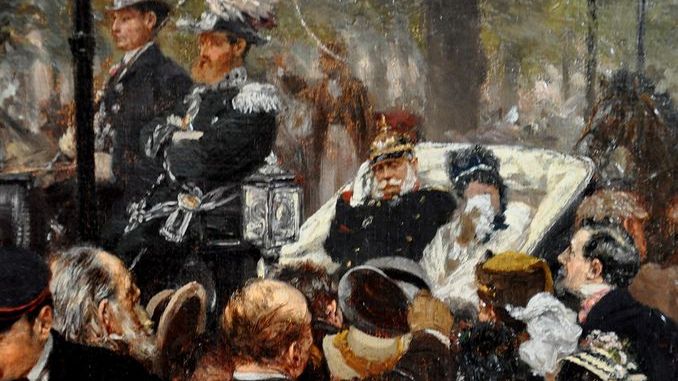
“Gründerzeit” – Founding Era
Unification was a catalyst for the Empire’s economy. Now measures, weights, and currencies were unitized. A uniform commercial and criminal law, a code of civil law and a uniform stages of appeal from county court to Reichsgericht (the supreme court of the German Reich) offered legal certainty for all federal states. Above all, the reparation payments from France after the Franco-Prussian War brought a “bonanza” into the country.
The monarchs and the aristocracy maintained their leading role in politics until World War I. Yet, it’s the well-educated and wealthy middle class that most shaped the 19th century, for instance lawyers, notaries, doctors, architects and civil servants. With industrialization, factory owners, bankers, capital owners and managers became increasingly influential. Who had the money, bought shares and had a magnificent villa built. At the bottom of the social hierarchy were the industry workers.
Industrial revolution
From the 1850s onwards, we speak of the Industrial Revolution. More and more people sought work in the factories. Among them were master craftsmen who had to give up their businesses and fellows who had thus lost their jobs. Moreover, day laborers and sons of small farmers who could not live from what they earned in agriculture. The industrial working class appeared as a new segment of the population. In many areas, industry cities came into being and grew rapidly, just think of the Ruhr. The living and working conditions were often miserable.
The world economic crisis of 1875 hit the Empire badly, almost twenty years of stagnation followed. Between 1865 and 1890 over 10 million people, mainly from Northern and Western Europe, emigrated to the USA.
The Catholics’ worries
After the exclusion of Austria, the Catholic power, the Protestants dominated in the Empire. Moreover, the Hohenzollern dynasty and most members of the government were Protestants. In the mainly Catholic Rhineland, the already existing tensions aggravated. Similarly, the number of confessional schools increased, and the Catholic Center Party won more and more followers.
Yet, there was no peace within the Catholic Church either. Supporters of the strictly conservative papal line fought against the moderate conservative and liberal Catholics. Under the extremely conservative Pope Pius IX, the crisis came to a head. He banned all convictions that did not combine with his thinking. In addition, the First Vatican Council of 1870 proclaimed papal infallibility on matters of faith and morals.
A minority among the Catholics rejected that doctrine and got together into the Old Catholic Church. The Roman Catholic Church’s sanctions followed promptly. Among others, Old Catholic teachers and professors should no longer be allowed to teach.
Bismarck was alarmed. Teachers and university professors were state officials, and he feared that the authority of the Pope would undermine that of the Emperor. So he refused, and gained support from the Liberals and the Old Catholics.
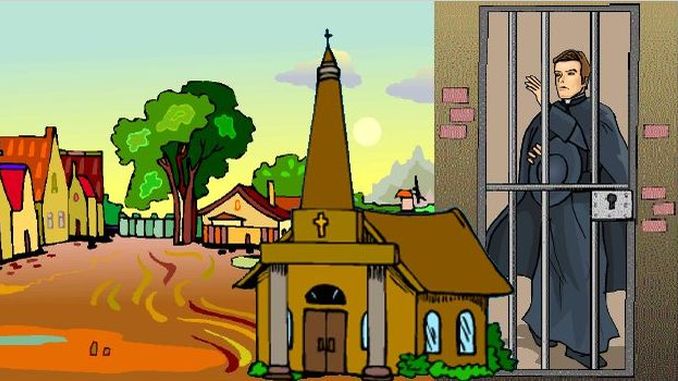
Kulturkampf
Now Bismarck’s struggle against the Catholic Church (1872-1880) began, we refer to it as “Kulturkampf”. He decreed a series of laws to reduce the Roman Catholic Church’s influence. The archbishops of Cologne, Münster, and Trier were arrested and expelled. Bishoprics and parishes stood vacant. Catholic schools and orders did not exist anymore. In the eyes of many people, among them Protestants standing loyally to the Empire and even members of the Imperial family, he went too far.
But despite all the hardships, the overwhelming majority of the Catholics did not surrender. People stood firmly to their priests and bishops. New orders and monasteries, hospitals, orphanages and further charity institutions came into being. The Catholic press got a real boost and the Center party won more and more followers. All in all, the Kulturkampf strengthened Catholicism in Germany rather than weakened it.
Bismarck was realistic enough to see that he could not win this fight. Moreover, he had to make peace with the Catholic Center Party for reasons of domestic policy. When Pope Pius IX died in 1878, he negotiated a compromise with the new, more moderate Pope Leo XIII. In the following years, he had various laws mitigated.
In 1880, the inauguration of the Cologne Cathedral after 40 years of work was a big event. It should also show that there was peace between Bismarck’s state and the Catholic Church. Emperor William I and Empress Augusta had travelled to Cologne to attend the ceremony. Yet, the atmosphere was frosty, and the tensions remained.
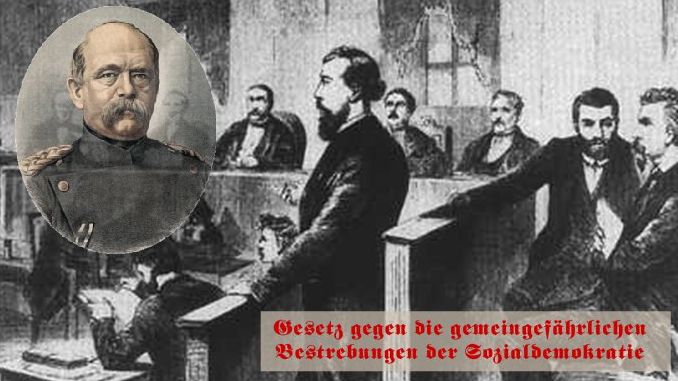
Anti-Socialist-Law
By 1875, two previous parties had united into the Social Democratic Workers’ Party (Sozialdemokratische Arbeiterpartei). As chairman August Bebel put it, the Social Democrats saw in Bismarck’s state the class enemy of the proletariat. Therefore, they stood against the Empire and the Hohenzollern monarchy. For Bismarck, cooperation was impossible, the socialists were his enemies.
He used two failed assassination attempts on Emperor Wilhelm I as pretext to introduce an Anti-Socialist Law in the Reichstag, although he knew that the Social Democrats had nothing to do with the attacks. The majority in the Reichstag passed it. From 1878 until 1890, all Social Democratic clubs and events, press and books were prohibited. Many Social Democrats were imprisoned or expelled from the country. However, the hardships endured strengthened cohesion among the Social Democrats, and they got more votes with every election.
In the Catholic regions of the Rhineland, however, the Social Democrats could not gain grain. In contrary, outing oneself as a Social Democrat would have meant ostracization. The Catholic working men voted for the Catholic Center Party. In the neighboring country of Berg, however, an industrial area, the SPD had a stronghold.
Bismarck’s social security system
At the same time, Bismarck saw the great need of the working class and considered it the state’s duty to help. Against fierce resistance from the left and from the right, he implemented a remarkable social security system: health care in 1883, accident insurance in 1884, invalidity and old-age insurance in 1889. Back then, it was the best in the world, but it did not win the working class over for the state.
Back then in the Siebengebirge
Let’s go back to the Siebengebirge. Many people had discovered the Siebengebirge for their excursions and left enough money in hotels, restaurants, etc. In 1883, the rack railway to the summit of Mount Drachenfels, in German Drachenfelsbahn, was put into service, it was the first one in Germany. At the same time, Baron von Sarter had his castle Drachenburg built. In 1888, another line to the top of Mount Petersberg followed.
Imperialism
While Bismarck’s foreign policy concentrated on securing the German Empire on the European continent, England, France, and Russia obtained and expanded colonies in Africa, Asia, South America, and the Pacific (Imperialism, 1850-1914), to gain natural resources and markets for their economies. For a long time Bismarck hesitated, but in 1884/85 also Germany established colonies in Togo, Cameroon, Southwest and East Africa, Kaiser-Wilhelm-Land on New Guinea, the Bismarck-Archipelago and the Marshall Islands. At the same time, upon Bismarck’s initiative, major European nations and the United States convened in Berlin to settle questions of colonial expansion in Central Africa.
The Year of three emperors
On March 9, 1888, Emperor Wilhelm I died shortly before his 91st birthday in Berlin, greatly mourned by his country. His son Frederick III (1888) could not join the funeral procession because he was already terminally ill, suffering from incurable laryngeal cancer. He died only 99 later, on June 15, 1888, in his beloved New Palace in Park Sanssouci in Potsdam, leaving his son William II (1888-1918) as the new Emperor.
Kingdom of Prussia and German Reich
Intro Prussian Rhineland | Prussian Rhine Province | Revolution 1848/49 | Bismarck Era | Wilhemine Era

Be the first to comment